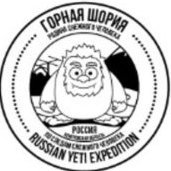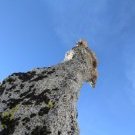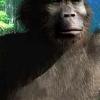Leaderboard
Popular Content
Showing content with the highest reputation on 11/15/2018 in all areas
-
Here you go: neophobia documented in Alpha Coyotes. Again, demonstrating an animal's ability to avoid camera traps. https://fishgame.com/2018/02/alpha-coyotes-proven-avoid-game-cameras/3 points
-
I am more than happy to hang up the guide gun concerning Sasquatch forever more, if this test comes back positive. And if its a good sample? They are going to be able to pin it down on the tree of life. What is its relation to great Apes? Denisovans? Neanderthals? Homo Sapiens? I just have little faith in DNA, but, I think this study is in good hands, not that Im tryng to start another fight. But DNA erodes, DNA is easily contaminated. What if a Black Bear(s) used the nests after Bigfoot? Mick Dodge? Is this new technique going to capture everything or just something very recent?2 points
-
In 1998, we were still at the infancy of the internet. It was not on your persons 16 hours a day on a smartphone. This does not surprise me in 1998. Now days, the laymen does have the opportunity, if prepared to do so, to reach out and spread information to the masses. Things can spread like wildfire more now than ever obviously. Will it work, we'll see, but the means to do so now are greater than ever by 100X or more than 1998.1 point
-
In 1998 a timber cruiser on contract to Alaska Native land owners found a nest on Prince of Wales Island. State forestry personnel and the ADFG Area Biologist were brought to the scene. The biologist actually said that it resembled gorilla nests he had seen in Africa. Hairs and scat were found in the nest. The biologist sent them to the Anchorage Crime Lab for DNA testing. At the time, that was his only real option. The resulting report came back that it matched nothing on file, and the lab threw out the samples. The nest was photographed by the timber cruiser with his ax in it for scale. Everybody, from the cruiser to the Native landowners, to the biologist knew what it was. The legends abound there, yet it all just died. The nest burned in a fire several years later. Iteas alldocumented by Robert Alley In “Raincoast Sasquatch”. http://alaskacryptozoologyinstitute.blogspot.com/p/the-alaskan-bigfoot.html The bottom line? Nests and DNA tests don’t count. So I doubt that DNA testing of the soil in nests count, either.1 point
-
I think when speaking of a subject like this, a potential nesting site that at best will provide a clue towards a N. American ape, what you hope to gain is interest in the subject. DNA coming back as unknown hominid or whatever will do nothing to move the needle on proof, but hopefully it moves the needle on awareness and thus leads to further research.1 point
-
Here is more info on e-dna : https://www.sciencedirect.com/science/article/pii/S00063207140044431 point
-
Scientists put their reputations on the line all the time supporting or rejecting theories. Global warming/climate change, on both sides of the anthropological question, is a case in point. Politicians and lawyers gain fame and notoriety all the time aligning themselves with negative situations. Science is aligning itself with politics and ideology more and more, so why not them, too?1 point
-
The tape is in the picture for size reference not in the position where I measured the print. That mud was on the lake shore and was the result of what was described by the nearby camp host as a cloud burst at 2 AM. . An overprint on that soft mud as you suggest would show either the heel or the toes in the center of the footprint depending on which was put down first. Since the toes are on one end and the heel impression on the other end are sharp you would expect either a heel or toe impression to be in the middle. I believe it to be only a single footprint. I don't see what you reference as my footprint which was not in the picture. I was in deep mud when I took the picture. The truely remarkable thing about it was this was in the center of about a 20 by 20 patch of mud on the lake shore. Behind where I was when I took the picture was the lake about 20 feet away. It looked like the print makers had walked out of the lake and were heading for the wood line. There were no footprints, either the central large one or the smaller 8 inch prints, anywhere in the 20 X 20 patch of mud. The only way that could have happened is if the maker of both prints, carefully walked on patches of vegetation to get to this point where they finally left a print. I have seen this aversion to leaving prints several times. Either they hate muddy feet, or they have some sort of avoidance protocol and go to great pains to avoid leaving footprints. For me to get to this point to take the picture, I basically did the same thing and walked on patches of vegetation as much as I could to avoid getting my boots so muddy.1 point
-
If meaningful conclusions can be drawn from such an eDNA study and explained as well as supported through their data, then it could be a step in the right direction. If it is sketchy or theoretical then they need to frame it in the right way. The big deal is credibility. So you pay for DNA lab testing but will they be able to communicate anything people will accept?1 point
-
^^^ Powerful article.^^^ It is well known among experienced hunters and trappers that bears and wolves do likewise. I hadn’t associated that activity to alpha animals, though. It makes perfect sense. Can such predators count? In other words, if two men penetrate an area, build a good blind for one to stay, then the other leaves, does the predator know that one remains?1 point
-
Two really good questions. The answer to second one would certainly lead to a deeper looking into of anything that would point to a new species. Goes to the heart of matter concerning a novel primate DNA discovery. This fairly recent article presents the scope of what e-DNA can be expected to accomplish? I suggest everyone read it in full and not stop when running across something that favors one's viewpoint. It takes reading the entire article to understand the potential for discovery which includes e-DNA's limitations as well. There is a lot that yet needs studying when it comes to what happens and doesn't happen in different kinds of soil makeups. It is a very interesting article in that regard: https://journals.plos.org/plosone/article?id=10.1371/journal.pone.0196430 This kind of research is why I truly like being on this Forum. I have learned, and continue to learn, sooo much!1 point
-
I don’t really like living on an island simply because of being constrained from driving away, but Kodiak Island is a real special place. The visual beauty is stunning, and the fishing is probably the best in Earth; salmon, halibut, rockfish, trout, steelhead. And the deer hunting is great, too. But those bears are certainly a factor to consider. This year in particular is concerning. It was a lousy salmon year, and the deer hunters this fall are running into trouble. A master guide active on the Alaska Outdoor Forum had some clients on the island who bagged several nice bucks posted that they came home without a single steak. The bears simply came in and brazenly took it all. Other hunters posted similar encounters. AFAIC, it’s a recipe for disaster. It will be remarkable if somebody doesn’t get chewed up this fall: http://forums.outdoorsdirectory.com/showthread.php/162141-Kodiak-deer-and-a-update-on-the-BEARS! I’ve sworn off deer hunting on that island. It just isn’t worth it. First of all, it’s very expensive to get there and back. It’s cheaper for me to deer hunt as a non-resident in good sasquatch country in California than Kodiak, and over-the-counter tags are readily available in northwest California. The deer harvest rate isn’t as good in California, and the odds are that I’d never see a sasquatch there, but I’d also never get mauled by a 1500 lb bear, either.1 point
-
Environmental DNA or eDNA is DNA that is collected from a variety of environmental samples such as soil, seawater, or even air [1] rather than directly sampled from an individual organism. As various organisms interact with the environment, DNA is expelled and accumulates in their surroundings. Example sources of eDNA include, but are not limited to, feces, mucus, gametes, shed skin, carcasses and hair.[2] Such samples can be analyzed by high-throughput DNA sequencing methods, known as metagenomics, for rapid measurement and monitoring of biodiversity. In order to better differentiate between organisms within a sample, DNA metabarcoding is used in which the sample is analyzed and uses previously studied DNA libraries to determine what organisms are present (e.g. BLAST).[3] The analysis of eDNA has great potential, not only for monitoring common species, but to genetically detect and identify other extant species that could influence conservation efforts.[4] This method allows for biomonitoring without requiring collection of the living organism, creating the ability to study organisms that are invasive, elusive, or endangered without introducing anthropogenic stress on the organism. Access to this genetic information makes a critical contribution to the understanding of population size, species distribution, and population dynamics for species not well documented. The integrity of eDNA samples is dependent upon its preservation within the environment. Soil, permafrost, freshwater and seawater are well-studied macro environments from which eDNA samples have been extracted, each of which include many more conditioned subenvironments.[5] Because of its versatility, eDNA is applied in many subenvironments such as freshwater sampling, seawater sampling, terrestrial soil sampling (tundra permafrost), aquatic soil sampling (river, lake, pond, and ocean sediment),[6] or other environments where normal sampling procedures can become problematic.[5]1 point
-
Did not know hiflier, thanks for clarifying. In that case, I still won’t be surprised if it comes back human or contaminated. If however it does, and I’d love it to, come back as something new, I hope it would be independently verified and then released in a manner it could not be suppressed. Maybe multiple online publishing’s and widespread internet release, get it buzzing on social media etc. make it so no one source can be controlled or influenced.1 point
-
Here's a place I'm going to backpack to next summer in the Carson Iceburg Wilderness. It's called Soda Cone and is located in the Eastern Sierra's, west of the town of Coleville. Not too many people visit this part of the Sierra's which adds to the wildness of it. Here's a link to a video of the area. https://youtu.be/y8nnQ41FC7E1 point
-
I would pay for one of them.1 point
-
1 point
-
Fair enough but if the second picture is from the same group then we have some hair nets fully and partially on, some appear to only have hats, plenty of arm hair etc to contaminate. How much of a "clean room" do you think that garage/barn is? Do animals like dog or horse frequent the area? Again, not a knock on ppl working towards a common goal, but don't be surprised if results come back contaminated in some way.1 point
-
Unless I'm missing something, it could never be positive for sasquatch. There is no baseline to match it against. It could only come out as an undocumented primate.1 point
-
How do you "know" this? I understand you assume it, but what have you done to validate or invalidate it? Have you read up on trail cam avoidance by alpha coyotes yet? They don't habituate to cameras, they're observed continuing to use the area and avoid the camera. "Hmmmm." MIB1 point
-
"I don't think they are so smart that they can detect trail cams and avoid being photographed" This is documented in other wild animals already. https://www.ncbi.nlm.nih.gov/pmc/articles/PMC4212972/ 1 point
-
1 point
This leaderboard is set to New York/GMT-05:00














